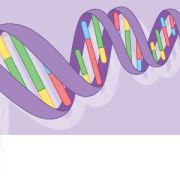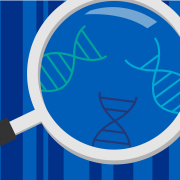Using genomics to fight infectious diseases
As genomics becomes increasingly relevant in clinical practice, it could help tackle outbreaks of diseases such as tuberculosis and measles
Infectious diseases are an ever-present population health risk. Major outbreaks such as the recent Ebola virus epidemic in West Africa are a reminder that, in our global community, infectious diseases can and do emerge and spread, and we need to be prepared to contain and treat them.
The health threat from infectious diseases is not limited to conditions as rare or dangerous as Ebola, nor is it a problem that primarily affects the developing world. Whilst good hygiene and living conditions, advanced healthcare, and vaccination programmes help protect the populations of developed countries, the cost of infectious disease in the UK alone is nevertheless reported to be around £30 billion. Add to this the rising tide of antibiotic resistance, and the significant risk posed by infectious diseases is further underlined. But how can genomics help?
Genomics and outbreak control
DNA sequencing technologies can be put to work to unravel the genomes of viruses and bacteria, as well as humans; and the good news is that they are a lot smaller, meaning the process is faster and less expensive.
Genomic data from pathogens has a host of clinical applications. In both hospital outbreaks and in the community, it can identify the most closely related microbial strains with greater speed and accuracy than traditional methods, allowing investigators to track them back to their source. For example, a study published this week used genomics to examine a Canadian outbreak of measles in 2010, and was able to trace it back to two separate visitors to the Montreal Winter Olympics carrying two different measles strains. The same process can also be used to trace hospital outbreaks – vital for containing disease.
Genomics and treatment
Many hospital patients develop infections, particularly since those with weaker immune functions, or other risk factors such as catheters or cannulas, are much more susceptible than healthy individuals. But in this age of multi-drug antimicrobial resistance (AMR), choosing the best treatment can be difficult; and mistreatment can be detrimental.
Microbiology laboratories can culture viruses or bacteria from patient samples, identify the species present and assess their response to a range of antibiotics. But information about pathogenicity and antibiotic resistance can also be gleaned from genomic data; so is it time for microbiology to go genomic?
The future of pathogen genomics
A new report from think-tank the PHG Foundation, Pathogen Genomics Into Practice, says that genomics could transform NHS microbiology services. It does sound a cautionary note, warning that, while genomic sequencing is already being put to good use in disease outbreaks, it will not become dominant in microbiology unless, or until, it can provide vital clinical information faster and more cheaply than traditional methods.
This is currently only the case for some infectious agents. For example, the mycobacteria that cause tuberculosis can be grown in the laboratory only very slowly, so it can take several weeks to be able to determine antibiotic sensitivity or resistance for a given patient; genomic analysis is much faster.
The PHG report argues for the development of an efficient, co-ordinated national system for using infectious disease genomics – including sharing genomic data to support further research and service improvement. In the meantime, patients with infectious diseases, alongside those with rare diseases and cancer, still look set to benefit from the genomic revolution.
–









